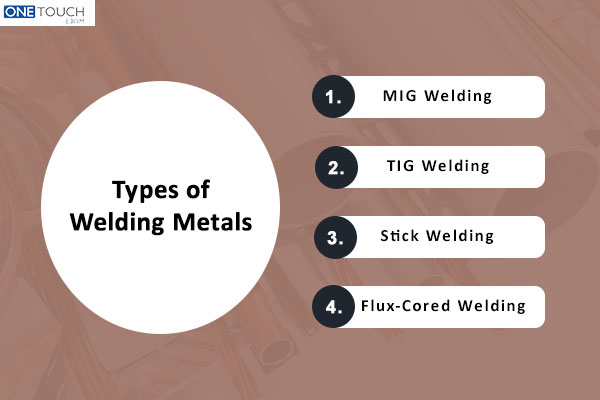Welding is the process or method of joining two metals with the help of a welding arc. The welding is used in different sectors, the welding process may vary depending on the metal used in the project. Choosing the type of metal for welding is the main goal to achieve a strong and long-lasting weld. According to the project metal or filler material should be used.
There are so many metals in the market, selecting the right metal according to the project is a big concern. Let us discuss about the types of metals used in welding, the importance of selecting the appropriate metal, the types of welding using metals, and many more things.
Importance of selecting the metal for welding
There are so many metals present in the market, all the metals have different characteristics and properties such as melting point of the metal, conductivity, strength, corrosion resistance, ductility, and hardness. Hence it is very important to keep in mind the properties of metal on which a welder is welding.
Let’s see an example if someone is welding two metals having very different properties of melting points, one has to choose the metal that has the property of a low melting point to ensure that the metals melt accordingly.
Types of metals
There are so many metals that have been considered for the welding process. Here are some of the metals we have discussed:
Aluminum:
Aluminum is a versatile metal that is widely used in the process of welding. This metal is light in weight. It has become popular because of its properties including good thermal conductivity, excellent corrosion resistance, and high strength-to-weight ratio. It is difficult to weld because of its low melting point and tends to crack.
Cast Iron:
It is a commonly used metal in the welding process. It is well known for its strong and durable features. It has various properties that make it so popular among welders to prefer this metal including good machinability, high heat resistance, and great wear resistance. It is difficult to weld because it has a tendency to crack and has high carbon content which makes it very difficult to produce a good or stable arc.
Stainless Steel:
Stainless steel has the properties of good ductility, excellent corrosion resistance and staining, and high strength. It is a widely used metal in welding because it is strong and resistant to corrosion metal. Because of having high thermal conductivity and tendency to wrap it makes it difficult to weld sometimes.
Cooper:
Copper is well known for its properties of having excellent corrosion resistance, and great thermal and electrical conductivity. It is a malleable and soft metal that is widely used in various welding processes. The tendency to oxidize and high thermal conductivity make it difficult to weld.
Steel:
Steel metal is strong and versatile in nature and is widely used in welding. It is well known for its high strength, excellent machinability, and good ductility. Some type of steel has high carbon content and a tendency to crack which is difficult for a healthy welding process.
Types of welding using metals
There are so many different types of welding that can be used with different metals. Some of the types of welding are as follows:
MIG welding:
MIG welding stands for metal inert gas welding. The mixture of inert gases and gas required for shielding gas while performing MIG welding. Argon and Helium are the inert gases used for MIG welding. The metals used for MIG welding are steel, stainless steel, and aluminum.
TIG welding:
TIG welding stands for tungsten inert gas welding and is also known as gas tungsten arc welding. It is the process of using the non-consumable tungsten electrode that transfers the current to the welding arc. The metals used in TIG welding are steel, stainless steel, copper, and aluminum.
Stick Welding:
It is a versatile arc welding method used in various projects or sectors such as shipbuilding, steel fabrication, manufacturing, mining, oil, structural welding, and construction. The metals used in stick welding are steel and cast iron.
Flux-Cored welding:
Flux-cored welding is also known as dual-shield welding. It is a semi-automatic arc welding process that is as similar to MAG ( Metal Active Gas) welding process. The metals used in flux-cored welding are steel and stainless steel.
Conclusion
In conclusion, understanding the types of materials used for various metal welding processes is essential for achieving strong and durable welds. Whether working with mild steel, stainless steel, aluminum, or other materials, selecting the right filler metal, shielding gas, and welding technique is crucial for producing high-quality welds. By considering factors such as material compatibility, joint design, and application requirements, welders can ensure successful outcomes and meet the specific needs of each welding project. With the proper knowledge and expertise, welders can confidently tackle a wide range of welding tasks and create reliable, long-lasting welds across different metal types.
